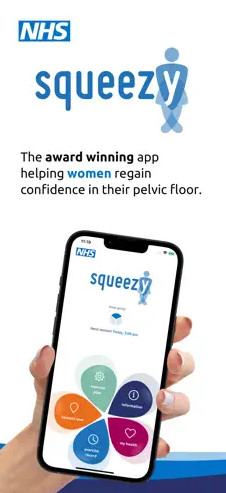How many times have you said that? Or rushed to the bathroom to empty your bladder before jumping on a trampoline? Or perhaps the worst thing about having a cold, flu or cough symptoms is not the stuffy head or nose, but the need to wear pads to control leakage with coughing or sneezing.
If any of these scenarios describe you, then you are one of the estimated 3 to 6 million women in the UK who have some degree of urinary incontinence. The most common reason for having this condition are changes that have occurred to the muscles and support structures of the pelvic floor after pregnancy and childbirth.About 25% to 45% of women suffer from urinary incontinence, defined as leakage of urine at least once in the past year.20%-30% of young women , 30%-40% of middle-aged women, and up to 50% of older women suffer from urinary incontinence.
Incontinence is the loss of bladder control. It is not a disease or a syndrome, but the result of certain medical conditions and lifestyle choices. It causes a great deal of distress and embarrassment for the individual as well as significant costs.There are many types of incontinence and symptoms can be anywhere from mild such as an occasional, slight loss of urine to very severe with a complete loss of control of both bladder and bowel. Most people’s symptoms fall somewhere in between.
When the muscles that keep the bladder closed are weak, accidents may occur when someone sneezes, laughs or lifts a heavy object. This is stress incontinence.
When the bladder muscles become too active (overactive), someone may feel a strong urge to go to the bathroom when they have little urine in the bladder. This is urge incontinence or overactive bladder.
People don't realize it's a medical condition, and that there is help.Many women think it's normal, part of having children or going into menopause.Many think it is embarrassing, and it can affect quality of life - emotional state, body image, sexuality
There are solutions that can help you.
Often many older adults and caregivers hold myths and misconceptions about bladder control problems, which could actually interfere with appropriate management. Some of these myths are:-
Bladder control loss is a normal part of aging, especially in older women and nothing can be done to improve my bladder healthThe only successful treatment for bladder control loss is surgeryDrinking less fluid will improve bladder control lossDiapers and pads are the only option to manage bladder control loss
These are just myths.
However, you don’t have to suffer in silence and you are not doomed to wearing pads your entire life for this problem. Did you know there are multiple ways to control incontinence?
These may include:
Lifestyle changes, such as losing weight and cutting down on caffeine and alcoholPelvic floor exercises (exercising your pelvic floor muscles by squeezing them) taught by a physiotherapistBladder training (where you learn ways to help you can wait longer between needing to urinate and passing urine) guided by a Continence Advisor.
The Gynaecology Continence Service is set up so that we can refer back and forth between each other so that you do not have to go back to your GP for repeat referrals.
The role of the Continence Advisor is to:-
Assess and explain
- Bladder Retraining
- Advice on lifestyle, fluids, weight loss, skin care
- Advice on toileting regimes
- Advice on night time problems
- Teaching intermittent catheterisation
- Advice regarding a wide range of incontinence products
You need to remember that these take time and you need to put in some effort, but we promise you, it will be worth it in the end!. Speak to your GP, midwife or practice nurse today.
It is not always possible to prevent urinary incontinence, but there are some steps you can take that may help reduce the chance of it developing, such as:
- Pelvic floor exercises after childbirth
- Keeping fit – in particular, ensuring that your pelvic floor muscles are strong
- Lifestyle changes, such as losing weight and cutting down on caffeine and alcohol
- Bladder training (where you learn ways to help you can wait longer between needing to urinate and passing urine) guided by a Continence Advisor.
The Gynaecology Continence team is dedicated to ensuring that we manage your bladder symptoms appropriately and help you to prevent problems and care for your bladder. We are a team of three women, a Consultant Gynaecologist, a Physiotherapist and a Continence Advisor/Urology Nurse, who have made it our life’s work to help you care for your bladder and promote good bladder habits so that you do not develop problems in the future.
One of the main causes of urinary incontinence is weak pelvic floor muscles. Your Continence Advisor and your physiotherapy specialist can help.Contact with a physiotherapist offers recommended first line treatment that has been proven to be effective (NICE, 2013) along with;Supervised pelvic floor muscle training Lifestyle modification, Health promotion and prevention strategies
